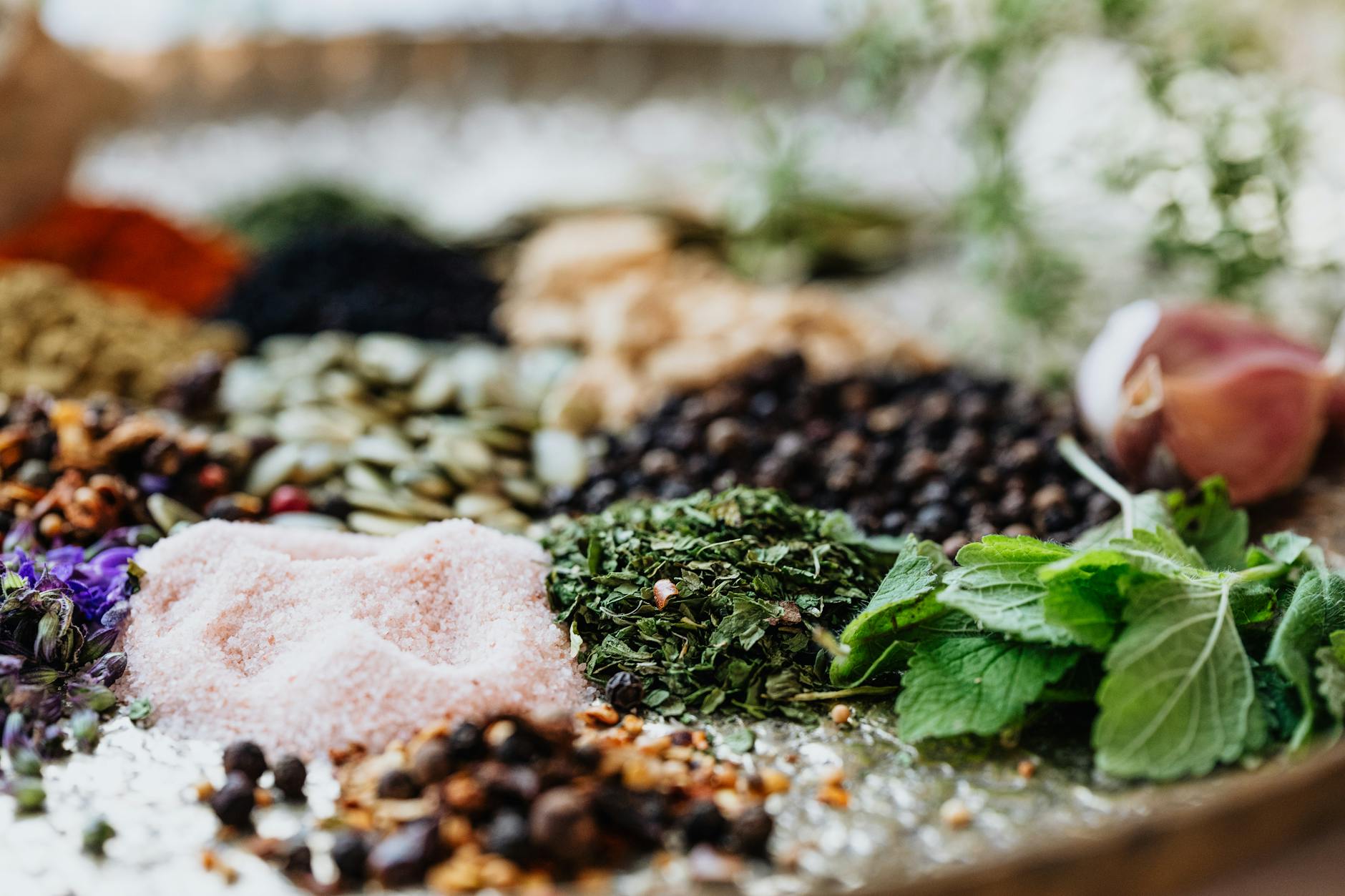The Many Faces of Dianthus Flowers
Dianthus flowers, with their vibrant hues and distinctive scent, are not just a visual treat. They hold a special place in history, art, culture, and yes, even in culinary arts. Let’s explore their fascinating world.
Types and Characteristics
There are numerous varieties of dianthus flowers, each boasting its own unique charm. What they all share, however, is a strong, spicy-sweet scent that resembles the fragrance of cloves or cinnamon (Flower.Style). This aroma has been highly prized for centuries and is often used in perfumes.
In addition to their delightful scent, dianthus flowers are visually stunning. Their petals can be either single or double and come in a wide range of colors, from white and pink to red and even purple. Some varieties feature bi-colored or multi-colored petals, adding to their visual appeal.
But the question we often get asked is, ‘are dianthus flowers edible?’ The answer is yes, but not all varieties. So, it’s important to be able to identify the edible ones, which we’ll cover in the next section.
Symbolic Meaning and History
Dianthus flowers have a rich history dating back thousands of years to ancient Greece, where they were used to make ceremonial crowns. They have inspired artists, poets, and historical figures with their beauty and practical uses, and have come to symbolize feelings of love, affection, gratitude, and admiration (Flower.Style).
Their symbolic meaning, combined with their rich history, makes dianthus a beloved flower choice for various occasions. Whether given as a token of love or used to add a touch of beauty and flavor to a meal, dianthus flowers bring a unique charm that’s hard to resist.
Whether you’re curious about edible dianthus for your next culinary adventure, or you simply appreciate the beauty and history of these flowers, we invite you to explore further. In the following sections, we’ll delve into the edibility, culinary uses, health benefits, and even the aromatherapy uses of dianthus flowers. So, stay with us as we continue to uncover the wonders of this multifaceted flower.
Edibility of Dianthus Flowers
The world of edible flowers is both fascinating and flavorsome, and Dianthus flowers are a perfect example. These delightful blooms not only add a splash of color to your garden but also bring a unique taste to your plate. But, how to identify the edible varieties and what are the guidelines for safe consumption? Let’s explore!
How to Identify Edible Varieties
“Dianthus flowers are edible,” you may have heard this phrase, but how do we identify the edible varieties?
Well, the rule of thumb is that the petals of the Dianthus flowers are the edible part, especially when grown organically (Source). The flowers have a slightly spicy, clove-like flavor, which contributes to their uniqueness in the culinary world (Franklin Vet). They can be used in a variety of common dishes, including as a garnish for salads, soups, and desserts.
When identifying edible dianthus, look for bright and vibrant petals. Ensure that the flowers are free from pesticides or other harmful chemicals. Always remember, if in doubt, it’s better to leave it out. For more insights into the world of edible dianthus, feel free to explore our other articles.
Safe Consumption Guidelines
While Dianthus flowers are indeed edible, it’s essential to follow safe consumption guidelines to enjoy their unique flavor without any concerns.
Firstly, always make sure that the Dianthus flowers you’re consuming have been grown organically, meaning they’re free from pesticides and other harmful chemicals. This is particularly important as these chemicals can be harmful if ingested.
Secondly, only the petals of Dianthus flowers are edible. Before eating, remove the white base of the petal as it has a bitter taste.
Lastly, consume Dianthus flowers in moderation. They can be used in many ways, such as being crystallized, added to cupcakes and desserts, or floated in cocktails.
By following these guidelines, you can safely enjoy the spicy sweetness of Dianthus flowers in your meals. Whether you’re a boho culinary lover or just someone looking to add some color and flavor to your dishes, Dianthus flowers are a great addition to your edible flower repertoire.
Remember to check out our articles on are dianthus edible for more information and culinary inspiration. Enjoy your floral feast!
Culinary Uses of Dianthus Flowers
As you already know, dianthus is more than just a pretty face in the garden. Yes, indeed, dianthus flowers are edible! But let’s take a moment to appreciate their culinary side.
Flavor Profile
Dianthus flowers boast a unique taste that can be described as a spicy sweetness, akin to the flavor of cloves. This unique flavor profile makes them a versatile edible flower that can be used in a variety of dishes. Remember, it’s always the petals that are edible, especially when grown organically.
Recipes and Serving Suggestions
Dianthus petals can be used to add a dash of color and unique flavor to a variety of culinary creations. Here are a few ways you can incorporate these delightful flowers into your cooking:
Crystallized Flowers: Dianthus petals can be delicately crystallized with sugar and used for decorating cakes. This not only adds a pop of color to your dessert but also lends a subtle sweetness with a spicy kick.
Cocktails: Floating dianthus petals in cocktails can elevate your beverage game. They add an interesting visual element and a hint of unique flavor to your drinks.
Salads and Soups: Sprinkle some dianthus petals on salads or soups as a garnish. They’ll add a new dimension of flavor and make your dish look garden-fresh!
Cupcakes and Desserts: Imagine biting into a cupcake peppered with colorful dianthus petals. This can be a wonderful way to incorporate edible flowers into your baking.
These are just a few ideas to get you started with dianthus in the kitchen. The possibilities are endless! Whether you’re an adventurous cook or a baking enthusiast, we encourage you to experiment with edible dianthus and discover your own unique recipes. Don’t forget to share your culinary creations with us. Happy cooking!
Health Benefits of Dianthus Flowers
As we dive deeper into the intriguing world of edible dianthus, we find that not only are dianthus flowers edible, but they also come packed with surprising health benefits. Let’s have a closer look at their nutritional content and their traditional and modern medicinal uses.
Nutritional Content
Dianthus flowers contain beneficial compounds such as flavonoids and essential oils that have antioxidant and anti-inflammatory properties, which may help protect against chronic diseases and promote overall health.
While the exact nutritional breakdown of dianthus flowers varies based on the variety and growing conditions, their unique blend of compounds contributes to their potential health benefits.
Not to mention, their slightly spicy, clove-like flavor makes them a delightful addition to a variety of dishes, from salads and soups to desserts (Franklin Vet).
Traditional and Modern Medicinal Uses
The use of dianthus flowers extends beyond the culinary world. They’ve been used in traditional medicine to treat various ailments, including digestive issues, respiratory problems, and skin conditions. However, more research is needed to fully understand their medicinal properties (Franklin Vet).
In addition to their potential internal health benefits, dianthus flowers also offer external benefits. Their strong, spicy-sweet scent, reminiscent of cloves or cinnamon, is often used in perfumes and can provide stress-relieving and anti-inflammatory benefits.
Dianthus flowers are also a source of essential oil, commonly found in perfumes, which adds to their broad range of uses.
So, if you’re wondering, ‘are dianthus flowers edible?’, the answer is a resounding yes! Not only are they edible and flavorful, but they also offer a bouquet of health benefits. Whether you choose to use them in your next culinary creation or in your daily skincare routine, you’ll be tapping into the powerful properties of these beautiful blooms. Explore more about the world of edible flowers dianthus with us.
Growing Your Own Edible Dianthus
If you’re a lover of culinary adventures and have developed a taste for edible flowers, particularly dianthus, why not consider growing your own? Cultivating edible dianthus flowers in your garden is a great way to ensure a fresh, organic supply right at your fingertips. Let’s dive into some gardening tips and organic growing practices for these edible delights.
Gardening Tips
The Dianthus genus includes over 27,000 registered cultivar names, and these plants can be grown as annuals, biennials, and evergreen perennials. Dianthus flowers are available during the summer and autumn seasons, and are resistant to damage by deer, though they can be nibbled on by rabbits.
When planting your dianthus, select a spot with well-drained soil and full sun exposure. These plants are quite hardy and can tolerate a range of soil types, although they do prefer slightly alkaline conditions. Regular watering is essential, but be careful not to overwater as dianthus flowers do not like excessively wet conditions.
Remember, when you’re growing dianthus for culinary use, it’s essential to avoid using chemical pesticides or fertilizers on your plants. This will ensure that your edible dianthus flowers are safe to eat.
Organic Growing Practices
To maintain an organic garden, focus on using natural methods to prevent pests and promote the healthy growth of your dianthus plants. Companion planting, for example, can help deter pests. Marigolds and nasturtiums are known for their pest-repelling properties and can be planted alongside your dianthus to create a protective barrier.
For fertilizer, consider using compost or organic matter to enrich your soil. This will provide your dianthus plants with the nutrients they need to thrive, without the use of harmful chemicals.
It’s also important to regularly check your dianthus plants for signs of disease or pest infestations. If you notice any problems, use organic methods to treat them. For instance, a spray made from water and mild dish soap can help control many common garden pests.
By following these gardening tips and organic growing practices, you’ll be well on your way to cultivating your own source of edible dianthus. Enjoy the process and the satisfaction of adding home-grown, edible flowers to your favorite dishes. Don’t forget to check out our dianthus flower edible recipes for inspiration. Happy gardening and cooking, friends!
Using Dianthus in Aromatherapy
Apart from their culinary uses, dianthus flowers have a role to play in the realm of aromatherapy. Their enchanting fragrance can soothe the mind and uplift the spirit. Let’s take a closer look at the scent profile of these flowers and how their essential oils can be extracted.
Scent Profile
Dianthus flowers are known for their strong, spicy-sweet scent that resembles the fragrance of cloves or cinnamon. This alluring aroma is often used in perfumes and can provide stress-relieving and anti-inflammatory benefits (Flower.Style). The scent is not just a sensory delight but also a therapeutic tool that helps in calming the mind, reducing anxiety, and promoting relaxation.
Whether you’re diffusing the oil in your living space or adding a few drops to your bath water, the scent of dianthus can turn your routine into a spa-like experience. So next time you’re wondering are dianthus flowers edible, remember they have uses beyond the kitchen!
Extracting Essential Oils
Dianthus flowers are a source of essential oil, which is commonly found in perfumes (Franklin Vet). The extraction of this oil is typically done through a process called steam distillation.
In this process, the flowers are placed in a distillation apparatus over water. As the water is heated, steam passes through the flowers, vaporizing the volatile compounds. The steam then cools down in a condenser, and the oil is collected separately from the water.
The oil extracted from dianthus flowers carries the sweet and spicy scent of the flowers, making it a popular choice in aromatherapy. It’s important to note that the oil should be used sparingly and always diluted before application to the skin.
So, not only are dianthus flowers a delightful addition to your meals, but they can also be a fragrant boost to your wellness routine. Whether you’re exploring edible dianthus for your culinary adventures or seeking natural ways to relax and unwind, these flowers have plenty to offer!
Remember, the power of nature is immense, and the more we learn about these edible flowers, the more we can appreciate their versatility and the joy they bring to our lives. Explore more about dianthus flower’s edibility in our other articles.



